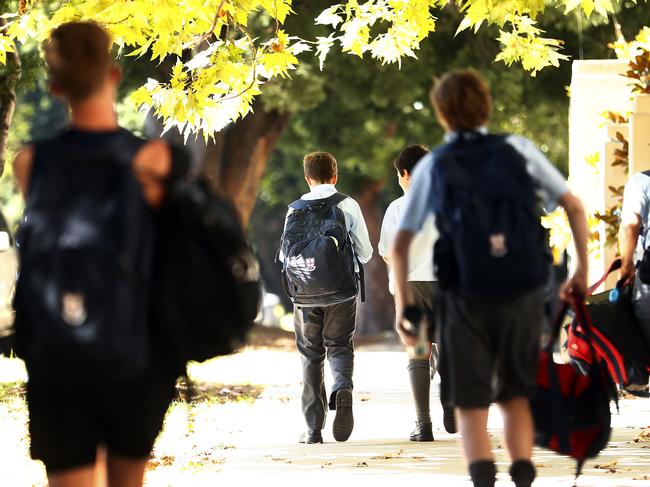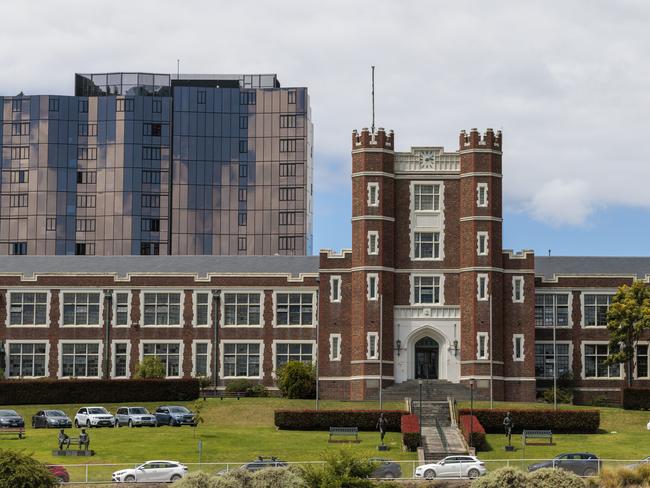Average Victorian secondary student misses equivalent of three terms of school, new figures show
The average Victorian secondary student is skipping nearly a year worth of high school, and experts say it’s for this alarming reason.
Education
Don't miss out on the headlines from Education. Followed categories will be added to My News.
The average Victorian secondary student will skip nearly a year worth of high school, with experts blaming a spike in mental health issues and feelings of isolation among teenagers.
A Saturday Herald Sun analysis of Department of Education figures shows the average high school student missed 163 days of class — or the equivalent of more than three terms — between years 7 and 12.
The Department’s figures showed students in years 7 to 10 failed to attend an average of 29.2 days a year, while year 11 and 12 students were AWOL an average of 23.2 days a year.
The non-attendance figures were all far worse than targets the Department set and are based on the latest publicly available data, which was collected in 2022.

The Department blamed illness from Covid and the flu as the reasons behind the absences for both primary and secondary schools, particularly in semester 1.
But educational and developmental psychologist Dr Janine Bounds said school refusal was causing widespread absences across Victoria.
“I’m seeing more children and young teens that are refusing to go to school. They have become extremely disengaged and waitlists to see psychologists have blown out,” Dr Bounds said.
“The Department is out of touch to just blame Covid and influenza as the reasons for absences in 2022.
“There were more factors in place such as mental health issues and this has certainly continued on.”
The Department’s Performance Measures reports also reveal students in years 7 to 9 rated their connectedness to school as 3.3 out of 5, missing the Department’s target of 3.7.
Child psychologist Dr Michael Carr-Gregg said he had also seen a high number of pupils refusing to go to school.
“The fact that the Department sets these targets obviously doesn’t take into account the realities of the mental health care system,” Dr Carr-Gregg said.
“Covid has a very long psychological tale and we are still feeling the impact, this is what these figures show.”

Primary school students in year 6 also stayed home an average of 24.3 days – 10 days above the Department’s KPI.
Pupils in year 5 also took off 23.6 days – nine days above target.
A Department of Education spokesman said: “We will continue to work with families and carers to support the mental health and school engagement of all Victorian students.”
“In 2023, Victoria recorded the highest attendance across the nation with school refusal accounting for just two per cent of all absences,” the spokesman said.
“Schools access a range of programs and services to help vulnerable and at-risk students re-engage with their education, including Navigator, and tailored mental health and wellbeing programs.”
But Opposition Education spokeswoman Jess Wilson said the growing number of lost days of school due to absence – far in excess of the government’s target – reflected a “deeply concerning” trend that needs to be addressed.
“Students don’t get better outcomes by spending more time away from the classroom and classmates. For this reason, we need to better understand what is driving this increase,” Ms Wilson said.
“The government using Covid as an excuse does nothing to address the growing concerns around school refusal and mental health issues that are not only putting students’ education at risk but their health and wellbeing as well,” she added.
Malcolm Elliott, the immediate past president of the Australian Primary Principals Association, said: “Child absences makes continuity in education extremely difficult, especially when we remember that there are 200 school days and if children are away for 10 or even 20 of those days then this disrupts the learning for the individual child,.”
Parents Victoria chief executive Gail McHardy said: “This is about how we can work together to reverse these trends and a lot of it is about quality of relationships and giving students a sense of belonging and an ability to relate to their peers and teachers.”



